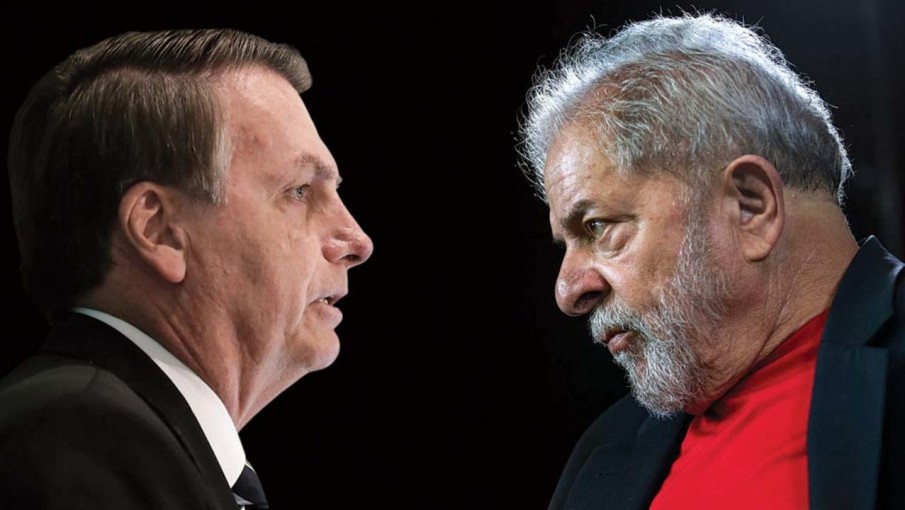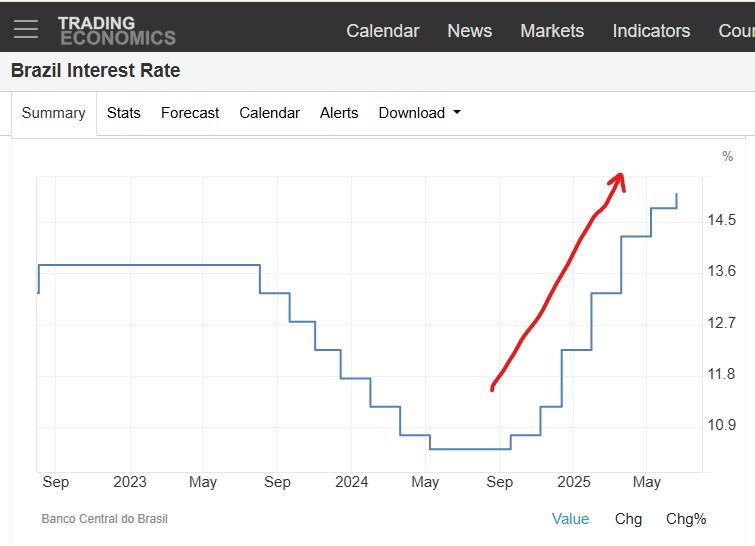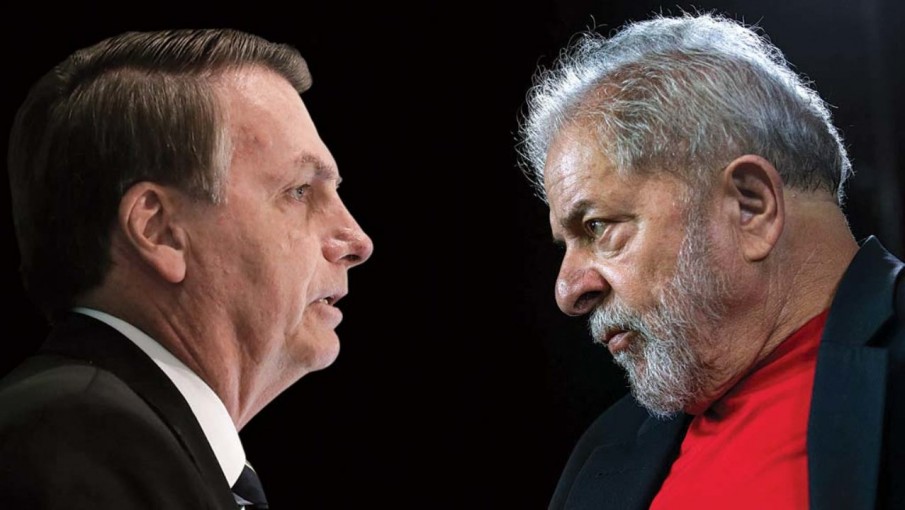With the victory over Trump and Bolsonaro, we are against Lula's austerity measures

By Fernanda Nadais. Rio de Janeriro- La Marx Brazil
A huge political crisis has opened in our country. Let's look at the shocking events that have occurred in the last month alone: On July 9, 2025, US President Donald Trump sanctioned Brazilian imports with 50% tariffs, arguing that Brazil maintains favorable bilateral trade balances. Trump's claim is false because while the US received $40.3 billion in exports from Brazil, imports from the US totaled $40.5 billion, meaning the trade balance is favorable to the US. The capitalist government of Lula and the Broad Front responded on July 15, 2025, with the countermeasures decree regulating the Reciprocity Law approved by Congress in May to confront Donald Trump's measures.
On July 18, 2025, U.S. Secretary of State Marco Rubio announced the revocation of the visas of Supreme Court Justice Alexandre de Moraes and his family members. In response, the Brazilian Supreme Court (STF) ordered on July 21, 2025, the placement of an electronic ankle bracelet on Jair Bolsonaro and the freezing of the assets and bank accounts of federal deputy Eduardo Bolsonaro, Jair Bolsonaro's son, for inciting Washington to adopt measures against the Brazilian government and the STF. These events made clear the true intentions of the Trump administration. The Trump administration is using these tariff measures as a way to pressure Bolsonaro to be released and not prosecuted, which constitutes an outrage and interference in Brazil's internal affairs. We Marxists repudiate such measures by U.S. imperialism, which are also receiving massive popular condemnation.
What are the causes of the friction and clashes between Trump's imperialist government and Lula's capitalist government? What do the clashes and clashes between Lulaism, Centraoism, and Bolsonarism mean? As we will explain in this article, the political crisis we are experiencing is an expression of the worsening economic and social crisis in capitalist Brazil, the backdrop of which is the plunge into poverty of millions and the growing discontent with both Lula's capitalist government and all capitalist parties and coalitions.
An acute economic crisis is brewing, triggering a regime crisis.
Does the United States want to invade Brazil? Is Lula confronting imperialism with the goal of freeing Brazil from US domination? Based on these events, should we define the Workers' Party (PT) and the ruling Broad Front coalition as an anti-imperialist movement? Not at all. The US doesn't need to invade or impose tariffs to dominate Brazil's economy; it does so through the control that imperialist corporations have over Brazilian businesses. The friction and disputes between Trump and Lula over the issue of tariffs are not just happening in Brazil; they are happening in dozens of capitalist countries around the world that are renegotiating the terms of world trade, seeking to pull the global capitalist economy out of crisis.
Lula is far from being a government that confronts the United States; quite the opposite. During his three terms, Brazil consolidated its position as a semi-colonial nation, under the domination of imperialism. It is one of the countries with the largest presence of subsidiaries of imperialist companies, ranking 13th globally, with 4,686 foreign companies operating in its territory. Why are there these fights between Lula and Trump, and between bourgeois and employer sectors in our country? Let's analyze in detail the crisis that is brewing, which is also part of the global crisis that capitalism is experiencing.
According to the Brazilian Institute of Geography and Statistics (IBGE), 58.9 million people live in poverty, while 9.5 million live in extreme poverty. However, poverty is even greater if subsidies and support programs such as Bolsa Familia are excluded. In 2012, social benefits represented only 23.5% of the income of the poorest households, but ten years later, this proportion rose to 42.2%. This means that subsidies are actually increasing in an attempt to alleviate poverty, which continues to grow.
Without subsidies, extreme poverty would reach 25 million people, while poverty reaches 68 million. To this figure, we must add the fact that 40% of the population survives on a paltry R$601 a month, equivalent to $100 a month, which is not enough to cover the basic family food basket. All of this reveals the real truth that 93 million people are living in poverty, a horrifying figure that, as a result of these years of Lula and Bolsonaro's governments, means that half of the population of capitalist Brazil is poor.
Added to this is another alarming fact: Annual inflation reached 5.32%, registering an upward trend over the last 10 months, which means a loss of wages and a permanent increase in poverty and misery. While we are not facing a hyperinflationary outbreak, inflation is rising relentlessly day by day, causing millions to fall into poverty on a daily basis. This process of rising inflation is a product of the global capitalist crisis, which is developing into stagflation, that is, a combination of inflation and recession that is affecting all countries and regions on five continents.

The image shows the growth of inflation from June 2024 to the present in 2025.
At the beginning of the year, the Brazilian real hit its lowest point against the dollar, implying a devaluation of the real, which also contributes to rising inflation and increasing poverty. At the same time, the country's worsening economic crisis generates scandalous inequality, as the richest 1% of the oligarchy concentrates the wealth, while 100 million people sink into poverty daily. This entire situation is causing growing discontent among the population and is the basis for the growth of social discontent with political parties, Parliament, and the institutions of the political regime.
The clashes between Lula's supporters, Bolsonarists, and the Centrao are the expression of a dispute between different sectors of the ruling classes over how to get Brazil out of the crisis and avoid an explosion of social discontent. They seek to divert public discontent by trying to make people believe that the crisis is the product of Trump's tariffs or the disputes with Bolsonarists. Beyond these attempts to divert discontent, the reality is that the disaster the Brazilian people are experiencing is the product of the policies of different governments, and in this case, the policies of Lula's government.
The failure of Lula's adjustment plan
On December 20, 2024, just six months ago, the Brazilian Senate approved the fiscal adjustment program of Luiz Inácio Lula da Silva's government, seeking to gradually reduce spending until 2030. Lula's adjustment plan specifically introduced a new formula for calculating the minimum wage increase, placing a growth cap of 2.5% per year. This point in Lula's plan represents a loss of half the purchasing power of wages, considering that inflation has soared from 4% to 5.5% in the last 10 months.
On the other hand, the calculation of wages has been considered crucial by the Ministry of Finance because the minimum wage has a direct impact on the wages of retirees and pensioners. Thus, as Brazilian workers' wages lose half their salaries, the incomes of retirees and pensioners also suffer a huge blow. The most vulnerable segments of the population are the ones who suffer from Lula's austerity plan because the main victims of poverty and extreme poverty are women, Afro-descendants, including Black and brown people, and young people.
The proportion of men living in poverty is 26.3%, while that of women is 28.4%. Extreme poverty among men is 4.3% and that of women is 4.5%. Among whites, 17.7% are poor, while among brown-skinned people, this proportion is almost double, at 35.5%; and among blacks, it is 30.8%. Regarding extreme poverty, only 2.6% of whites are in this situation, while among brown-skinned and blacks, the figures are 6% and 4.7%, respectively. Poverty also hits young people hard: Among those under 15, the rate is 44.8%, while for young people aged 15 to 29, it is 29.9%.
Lula's program sought to gradually reduce an annual bonus received by low-income workers, which further worsened poverty rates. What Lula's capitalist government sought with this adjustment plan was to achieve public spending savings of 327 billion reais, equivalent to 54.8 billion dollars or 52 billion euros. But the plan resulted in failure because it triggered a surge in inflation, forcing the Central Bank of Brazil to raise interest rates from 12% to 15% to curb inflation, which at the time was 4.87%, while the real continued to devalue against the dollar.
In turn, the interest rate hike had the immediate effect of slowing the economy. The "Spending Cap" entails R$31 billion already cut from health, education, and social programs. But the government became hostage to its own measures because, on the one hand, it triggered poverty, while on the other, by establishing a public spending limit, it was deprived of resources to establish new subsidies to alleviate the poverty that the adjustment plan itself was creating. This forced the Lula government to take desperate measures to secure additional funds. On May 22, 2025, it decreed a measure to triple the tax on financial transactions, the so-called Financial Operations Tax (IOF), with the goal of raising R$20.5 billion this year and R$40.1 billion in 2026 .
But Lula's measure sparked panic in the markets. The dollar began to rise on the futures market, and the EWZ, the main exchange-traded fund for Brazilian stocks on Wall Street, plummeted more than 3%. The collapse of Brazil's benchmark index in New York triggered a crisis that forced the Planalto Presidential Palace to urgently convene a meeting with the ministers of the Civil House, Rui Costa; of Institutional Relations, Gleisi Hoffmann; and of the Secretariat of Communication, Sidônio Palmeira. At that meeting, they resolved to withdraw part of the measures, namely the IOF tax on investments of Brazilian funds abroad. Fernando Haddad, the Minister of Economy, met for five hours with parliamentarians on June 8, 2025, and announced an "agreement" with the legislature that the government would send to Congress.

The graph shows the increase in interest rates since Lula's adjustment plan.
But on June 9, 2025, Hugo Motta, the president of the Chamber of Deputies, backtracked on the agreement and stated that he would not guarantee that Congress would approve the government's proposed package. Faced with the crisis triggered by Motta's statements on June 11, 2025, Haddad clashed with Bolsonaro's supporters in the Chamber but again reversed himself on the IOF's tax collection and submitted a Provisional Measure (MP) increasing taxes on sports betting. Despite the government's backtracking, Motta requested an urgent vote in Congress on the measure, forcing Lula to call an emergency meeting with Motta and other Chamber leaders and ministers on June 14 to avoid Lula's defeat in Congress.
However, those meetings failed. On June 24, 2025, Motta, in agreement with Davi Alcolumbre, president of the Senate, announced that he would present the PDL (Legislative Decree Bill) that would revoke the IOF Government Decree. This was a historic defeat for Lula's capitalist government. Added to the outbreak of the economic crisis was the repeal of his decree by 383 votes to 98, a historic repeal since Parliament had not revoked a presidential decree for more than 32 years. The last time this happened was in 1992, at the end of Fernando Collor de Mello's impeachment trial.
The revocation of Lula's decree generated a political crisis that forced the intervention of the Supreme Federal Court (STF), which revoked the executive and legislative decrees and ordered a conciliation hearing for July 15, with the presence of the heads of the respective branches of government, to reach a negotiated solution. The crisis already encompassed all three branches of government; in other words, the austerity plan of Lula's capitalist government had already failed on all fronts: It skyrocketed inflation, increased poverty, caused currency devaluation, and the collapse of Brazil's assets on Wall Street. It then opened a political crisis between Parliament and the executive branch, between the Centrao, Bolsonarism, and Lulism. In the midst of this social and political crisis, which was leading to a confrontation between the different capitalist sectors, Donald Trump appeared with his measures, which diverted the entire internal crisis of Brazil to foreign markets, but only aggravated the country's entire political crisis.
The Brazilian left capitulates to Lula's capitalist government
In a sense, the best thing that could have happened to Lula's capitalist government was the crude measures taken by Donald Trump's administration. This allowed attention to be completely diverted from the crisis, and now a new culprit for Brazil's crisis "magically" appeared: Donald Trump and the tariffs. "Brazil is a sovereign country, with independent institutions, that does not accept being tutelage by anyone," was Lula's statement on Twitter. This curiously garnered him support from sectors such as the agro-industrial bourgeoisie of the Brazilian Confederation of Agriculture and Livestock (CNA), which has always supported former President Jair Bolsonaro, but is now distancing itself from Bolsonarism because it is being hit by Trump's tariffs.
The CNA criticized Trump's measures, but a crisis also erupted within Bolsonaro's party. Trump's measures hit the wealthy bourgeoisie of São Paulo, which exports heavily to the US. This sparked tensions between the governor of São Paulo state, the Bolsonarist Tarcísio de Freitas, and Bolsonaro's son, Eduardo. This allowed Lula to present himself as a "victim" of Donald Trump's attack and blame Bolsonaro for the crisis. All of this allowed Lula to align himself with Lula, the entire public opinion, the bourgeois media, and all of the country's political and union leaderships. In turn, the political crisis and the Lula campaign opened a new chapter in the crisis of the left, which, through a wave of capitulations by leftist groups, began to write one of the most shameful pages in the history of the Brazilian left.
The entire leadership of the Workers' Party and allied leaders came out in support of Lula, as did the leaders of the PSOL and its component groups such as the MES, Resistencia, Valerio Arcary, etc., all came out in support of Lula. The CUT, the Movimento Sem Terra (MST), and all the country's social organizations came out in support of Lula, and they "forgot" that Lula's austerity plan is responsible for the crisis. The Stalinist PC do B, as well as groups like the LIT-CI and its PSTU group, removed the slogan "Down with Lula's austerity" from their statements. Now the fight is solely against Bolsonaro and Trump, as if Bolsonaro were the one governing Brazil, something that is completely unrealistic.
This policy of the Brazilian left, besides being a betrayal of Marxism because it is a policy of collaboration with the ruling classes, is very dangerous for workers and the people because it seeks to portray Lula as something he is not, which is a deception of the people. To claim that "we must demand that Lula" take measures against imperialism or capitalism is a betrayal and a lie, because Lula will not confront imperialism or the capitalists. We must speak clearly to the workers and the people and tell them the truth: Lula will make a pact with Trump, with imperialism and the capitalists to save Brazilian capitalism in crisis, even if many workers don't believe us or get angry at us.
Furthermore, the left's policies are a deception because, beyond political maneuvering and campaigns, the reality is that the crisis in capitalist Brazil remains unresolved, and Lula's austerity plan continues to be implemented there, firmly alive and kicking, without any modification. The continuation of Lula's austerity plan is a danger to workers and the people because it causes poverty and misery. Meetings have already begun between Lula's Brazilian government and the main bourgeois organizations, such as the CNI (National Confederation of Industry) and the CNA (National Confederation of Agriculture and Livestock), advocating against retaliation against the United States and focusing on " negotiation" and "dialogue " with Trump.
The Brazilian bourgeoisie will seek consensus and agreements while fighting "from the podium " and the mass media, with the goal of preventing by all means the emergence of any alternative independent of the government in Brazil. The crisis of the Brazilian left is a clear example of the crisis of the global left. This crisis does not surprise Marxists; on the contrary, it reaffirms the need to advance the regrouping of revolutionaries. At La Marx Brasil, we promote a policy that begins by fighting and defeating the maneuvers of Trump and Bolsonaro, and then, from there, defeats Lula's austerity plan.
It is necessary to denounce that Brazil's problem is capitalism, whether it is governed by Lula or the Bosonaro government. Capitalism can offer the people nothing but misery, poverty, and inequality. Any plan of struggle, any call to action, any appeal that does not include the slogans of the need to defeat Lula's austerity measures is useless because it does not stem from the reality of what is happening in the country, which the media and political leaders are trying to hide. The truth is that the only way to solve the crisis and the poverty of our people is with a workers' and popular government. In the meantime, supporting Lula is supporting capitalism. We call on you around these proposals to organize with La Marx Brasil to begin advancing the development of a principled Brazilian left that has a policy of class independence, that never calls for distrust of a bourgeois government, and on the contrary, fights against it, within the framework of the struggle for Global Socialism.



